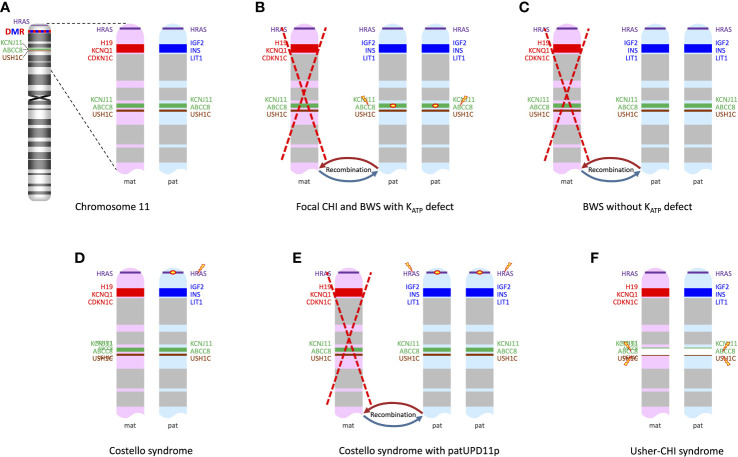Figure 1.
(A) ideogram of chromosome 11 displaying the loci of genes of interest in the context of syndromic CHI and the differentially methylated region (DMR) in the 11p15 region; enlarged view of 11p13-11p15 shows genes expressed from the maternal chromosome (in red) and those expressed from the paternal chromosome (in blue). (B) patUPD11p with a pathogenic variant in ABCC8 or KCNJ11 on the paternal allele leads to a biallelic defect of ABCC8 or KCNJ11 and at the same time to overexpression of paternally imprinted genes IGF2, INS and LIT1; this mechanism is shared by focal CHI and rare cases of BWS with an ABCC8 or KCNJ11 mutation on the paternal allele. (C) BWS due to patUPD11p without an ABCC8 or KCNJ11 mutation just has the overexpression of paternally imprinted genes, while expression of the maternally imprinted genes such as KCNQ1 is decreased or lacking. (D) In Costello syndrome, the pathogenic HRAS mutation usually resides on the paternally inherited chromosome; other genes in the region are unaffected. (E) Somatic patUPD11p in Costello syndrome leads to the overexpression of paternally imprinted genes/lack of expression of maternally imprinted genes and also to a duplication of the mutated HRAS, which may contribute to dysregulation of proliferation/differentiation in affected cells. (F) Usher-CHI syndrome results from a homozygous contiguous gene deletion encompassing parts of ABCC8 and the USH1C genes.

